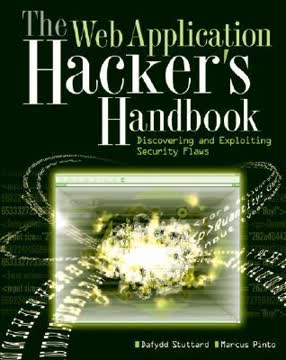Key Takeaways
1. Penetration Testing Simulates Real-World Attacks
On a pentest (as opposed to a vulnerability assessment), the testers not only discover vulnerabilities that could be used by attackers but also exploit vulnerabilities, where possible, to assess what attackers might gain after a successful exploitation.
Beyond vulnerability scanning. Penetration testing goes beyond simply identifying vulnerabilities; it actively exploits them to understand the potential impact of a successful breach. This hands-on approach provides a more realistic assessment of an organization's security posture. By simulating real-world attack scenarios, pentesters can uncover weaknesses that automated tools might miss.
Comprehensive security evaluation. A pentest aims to find and exploit vulnerabilities in a system, network, or application. This includes:
- Identifying weaknesses in security controls
- Assessing the potential impact of a successful attack
- Providing recommendations for remediation
Proactive security. Penetration testing is a proactive measure that helps organizations identify and address security weaknesses before malicious actors can exploit them. It's a crucial component of a robust security program.
2. Pre-Engagement Defines the Scope and Rules
Miscommunication between a pentester and a client who expects a simple vulnerability scan could lead to a sticky situation because penetration tests are much more intrusive.
Setting clear expectations. The pre-engagement phase is critical for establishing a clear understanding between the pentester and the client regarding the scope, objectives, and limitations of the test. This helps avoid misunderstandings and ensures that the pentest aligns with the client's business goals.
Key elements of pre-engagement:
- Defining the scope of the test (IP addresses, hosts, applications)
- Establishing the testing window (days, hours)
- Identifying contact information for critical issues
- Obtaining authorization and limiting liability
- Agreeing on payment terms and confidentiality
Authorization is key. Pentesters must obtain written authorization to perform the test and include a liability clause in the contract to protect themselves from unforeseen consequences. This ensures that the pentest is conducted legally and ethically.
3. Information Gathering Uncovers the Attack Surface
During this phase, you analyze freely available sources of information, a process known as gathering open source intelligence (OSINT).
Reconnaissance is paramount. The information-gathering phase involves collecting publicly available information about the target organization and its systems. This process, known as OSINT, helps pentesters identify potential attack vectors and gain a better understanding of the target's infrastructure.
OSINT techniques:
- Netcraft: Identifies web server software and hosting information
- Whois lookups: Reveals domain registration details and contact information
- DNS reconnaissance: Maps out the organization's network infrastructure
- Email address searches: Uncovers potential usernames and employee information
- Maltego: Visualizes relationships between entities and data points
Mapping the attack surface. The information-gathering phase helps pentesters identify potential entry points and prioritize their efforts. This allows them to focus on the most vulnerable areas of the target's infrastructure.
4. Threat Modeling Prioritizes Risks
Based on the knowledge gained in the information-gathering phase, we move on to threat modeling.
Thinking like an attacker. Threat modeling involves analyzing the information gathered and developing potential attack scenarios based on the target's assets and vulnerabilities. This helps pentesters prioritize their efforts and focus on the most critical risks.
Identifying high-value targets. Threat modeling helps pentesters identify the most valuable assets within the organization, such as proprietary software, customer data, or financial records. This allows them to focus their efforts on protecting these critical assets.
Developing attack scenarios. Threat modeling involves creating realistic attack scenarios based on the information gathered and the identified vulnerabilities. This helps pentesters understand how an attacker might exploit these weaknesses to compromise the target's systems.
5. Vulnerability Analysis Identifies Weaknesses
In this phase, the pentester attempts to discover vulnerabilities in the systems that can be taken advantage of in the exploitation phase.
Automated and manual techniques. Vulnerability analysis involves using a combination of automated tools and manual techniques to identify weaknesses in the target's systems. This includes running vulnerability scanners, reviewing code, and performing manual testing.
Vulnerability scanning tools:
- Nessus: A commercial vulnerability scanner with a wide range of checks
- Nmap Scripting Engine (NSE): A powerful scripting engine for Nmap
- Metasploit scanner modules: Modules within Metasploit for vulnerability scanning
Critical thinking is key. While vulnerability scanners are useful tools, they cannot fully replace critical thinking and manual analysis. Pentesters must verify the results of automated scans and use their expertise to identify vulnerabilities that scanners might miss.
6. Exploitation Validates Vulnerabilities
Now for the fun stuff: exploitation. Here we run exploits against the vulnerabilities we've discovered (sometimes using a tool like Metasploit) in an attempt to access a client's systems.
Putting theory into practice. The exploitation phase involves actively exploiting the vulnerabilities identified in the previous phase to gain access to the target's systems. This demonstrates the real-world impact of these weaknesses and helps the client understand the potential damage that an attacker could cause.
Exploitation tools:
- Metasploit Framework: A powerful framework for developing and executing exploits
- Manual exploitation: Crafting custom exploits and payloads
Assessing the risk. Successful exploitation provides concrete evidence of the risk associated with a particular vulnerability. This helps the client prioritize remediation efforts and allocate resources effectively.
7. Post Exploitation Leverages Compromised Systems
Some say pentests truly begin only after exploitation, in the post-exploitation phase.
Expanding the attack surface. The post-exploitation phase involves leveraging the initial access gained to explore the target's internal network, gather sensitive information, and identify additional vulnerabilities. This helps pentesters understand the full extent of the compromise and the potential impact on the organization.
Post-exploitation techniques:
- Gathering system information
- Elevating privileges
- Dumping password hashes
- Pivoting to other systems
- Establishing persistence
Understanding the real impact. Post exploitation helps pentesters assess the true risk to the organization by demonstrating the potential for lateral movement, data exfiltration, and other malicious activities.
8. Reporting Communicates Findings and Recommendations
The final phase of penetration testing is reporting. This is where we convey our findings to the customer in a meaningful way.
Clear and concise communication. The reporting phase involves summarizing the findings of the pentest in a clear and concise manner, tailored to both technical and non-technical audiences. This includes an executive summary for management and a detailed technical report for IT staff.
Key elements of a pentest report:
- Executive summary: Provides a high-level overview of the findings and recommendations
- Technical report: Includes detailed information about the vulnerabilities identified, the exploitation process, and the impact on the organization
- Risk assessment: Quantifies the risk associated with each vulnerability
- Remediation recommendations: Provides specific steps to address the identified weaknesses
Actionable insights. The pentest report should provide actionable insights that the client can use to improve their security posture and protect their assets. This includes prioritizing remediation efforts and developing a strategic roadmap for long-term security improvements.
9. Kali Linux is a Pentester's Swiss Army Knife
A book like this would not be possible without many years of dedicated work on the part of the information security community.
A comprehensive pentesting distribution. Kali Linux is a Debian-based distribution that comes preinstalled with a wide variety of security tools, making it an ideal platform for penetration testing. It provides a centralized and preconfigured environment for performing various tasks, from information gathering to exploitation.
Essential tools included:
- Nmap: A powerful port scanner for network discovery
- Wireshark: A network protocol analyzer for capturing and analyzing traffic
- Metasploit Framework: A framework for developing and executing exploits
- Aircrack-ng suite: A suite of tools for wireless security assessment
- Burp Suite: A web application testing platform with a proxy feature
Community-driven development. Kali Linux is a community-driven project, constantly evolving to include the latest tools and techniques. This ensures that pentesters have access to the resources they need to stay ahead of emerging threats.
10. Programming Skills Enhance Pentesting Capabilities
When I started in information security, the closest thing I'd ever done to hacking was making the Windows XP pre-SP2 Start menu say Georgia instead of Start.
Automation and customization. Programming skills allow pentesters to automate repetitive tasks, customize existing tools, and develop new exploits tailored to specific environments. This can significantly improve efficiency and effectiveness.
Useful programming languages:
- Bash scripting: Automating tasks on Linux systems
- Python scripting: Developing custom tools and exploits
- C programming: Understanding low-level system interactions and developing exploits
Understanding code is crucial. Even if you don't write your own exploits, understanding programming concepts is essential for analyzing existing code, identifying vulnerabilities, and adapting exploits to different environments.
11. Social Engineering Exploits Human Trust
After all, with client-side attacks, the software in question must open a malicious file of some sort, so we must convince the user to help us out.
The human element. Social engineering involves manipulating individuals into performing actions that compromise security, such as revealing sensitive information or clicking on malicious links. It's often the weakest link in an organization's security posture.
Common social-engineering techniques:
- Phishing: Sending deceptive emails to trick users into revealing credentials or downloading malware
- Pretexting: Creating a false scenario to gain trust and elicit information
- Baiting: Offering something enticing, like a free download, to lure users into a trap
- Quid pro quo: Offering a service in exchange for information or access
Security awareness training is essential. Organizations must train employees to recognize and avoid social-engineering attacks. This includes teaching them to verify the authenticity of requests, be wary of suspicious links and attachments, and protect their personal information.
12. Exploit Development Requires In-Depth Knowledge
Some say the pentest truly begins after exploitation.
Understanding the inner workings. Exploit development involves understanding how software works at a low level and identifying ways to manipulate its behavior to achieve malicious goals. This requires a deep understanding of memory management, assembly language, and operating system internals.
Key exploit development concepts:
- Stack-based buffer overflows: Overwriting memory on the stack to hijack execution
- Structured exception handler (SEH) overwrites: Manipulating exception handling mechanisms to gain control
- Return-oriented programming (ROP): Chaining together existing code snippets to execute arbitrary code
A continuous learning process. Exploit development is a constantly evolving field, requiring continuous learning and adaptation to new mitigation techniques. It's a challenging but rewarding skill that can significantly enhance a pentester's capabilities.
Last updated:
FAQ
What is Penetration Testing: A Hands-On Introduction to Hacking by Georgia Weidman about?
- Comprehensive pentesting guide: The book offers a practical, hands-on introduction to penetration testing, covering everything from setting up a virtual lab to advanced exploit development and mobile hacking.
- Structured learning path: It is organized into clear sections—Basics, Assessments, Attacks, Exploit Development, and Mobile Hacking—allowing readers to progress from foundational to advanced topics.
- Real-world scenarios: Readers learn through practical exercises, real-life examples, and the use of industry-standard tools like Kali Linux and Metasploit.
- Focus on offensive security: The book emphasizes understanding attacker methodologies, including web, network, wireless, and mobile attacks.
Why should I read Penetration Testing: A Hands-On Introduction to Hacking by Georgia Weidman?
- Authoritative expertise: Georgia Weidman is a respected penetration tester and security researcher, ensuring the content is both credible and current.
- Hands-on, accessible approach: The book is designed for beginners and intermediate learners, requiring minimal prerequisites and guiding readers step-by-step through practical exercises.
- Broad and modern coverage: It addresses a wide range of topics, including network attacks, web application vulnerabilities, wireless security, and mobile device exploitation.
- Preparation for real-world pentesting: By teaching both technical skills and attacker mindset, the book prepares readers for actual penetration testing engagements.
What are the key takeaways from Penetration Testing: A Hands-On Introduction to Hacking by Georgia Weidman?
- End-to-end pentesting process: Readers gain a thorough understanding of the entire penetration testing lifecycle, from reconnaissance to reporting.
- Practical skill development: The book emphasizes hands-on exercises, ensuring readers can apply what they learn in real-world scenarios.
- Understanding attacker techniques: It demystifies how attackers exploit vulnerabilities, use social engineering, and bypass security controls.
- Modern security landscape: The book covers up-to-date attack vectors, including mobile and wireless threats, and discusses mitigation techniques.
How does Georgia Weidman recommend setting up a penetration testing lab in Penetration Testing: A Hands-On Introduction to Hacking?
- Virtualization tools: The book advises using VMware Player or Fusion to create isolated virtual environments for safe testing.
- Kali Linux and targets: Readers are guided to install Kali Linux and set up vulnerable target machines like Windows XP, Windows 7, and Ubuntu.
- Network configuration: It recommends using bridged networking to simulate real-world conditions while cautioning against exposing vulnerable systems to public networks.
- Essential tools: Additional tools such as Nessus, Hyperion, and Veil-Evasion are installed to practice a variety of attacks and defenses.
What are the main phases of penetration testing as outlined by Georgia Weidman in Penetration Testing: A Hands-On Introduction to Hacking?
- Seven-stage process: The book details pre-engagement, information gathering, threat modeling, vulnerability analysis, exploitation, post-exploitation, and reporting.
- Pre-engagement planning: Emphasizes defining scope, goals, and rules of engagement to avoid legal and ethical issues.
- Thorough reporting: Stresses the importance of clear, actionable reports for both technical and non-technical stakeholders.
- Iterative methodology: Encourages revisiting earlier phases as new information is discovered during the test.
What Linux and programming basics does Georgia Weidman teach in Penetration Testing: A Hands-On Introduction to Hacking?
- Linux command line: The book covers navigation, file manipulation, permissions, and text editing with nano and vi.
- Data processing tools: Readers learn to use grep, sed, and awk for searching and manipulating text, which is crucial for analyzing pentest data.
- Networking commands: Tools like ifconfig, netstat, and netcat are introduced for network configuration and monitoring.
- Scripting fundamentals: The book teaches Bash scripting for automation, Python for network tasks, and C programming basics for exploit development.
How does Penetration Testing: A Hands-On Introduction to Hacking by Georgia Weidman introduce and use the Metasploit Framework?
- Getting started: The book explains how to launch Metasploit services and use interfaces like msfconsole and msfcli.
- Module selection: Readers learn to search for, configure, and execute exploit modules, with practical examples such as MS08-067.
- Payloads and handlers: It clarifies the differences between bind and reverse shells, and how to set up payload handlers and create standalone payloads with msfvenom.
- Integration with other tools: The book demonstrates using Metasploit alongside other tools for comprehensive exploitation and post-exploitation.
What information gathering and vulnerability analysis techniques does Georgia Weidman recommend in Penetration Testing: A Hands-On Introduction to Hacking?
- Open Source Intelligence (OSINT): The book covers using tools like Netcraft, Whois, Nslookup, and Maltego for legal information gathering.
- Port and service scanning: Manual and automated scanning with Netcat and Nmap, including advanced techniques like SYN and UDP scans, are explained.
- Vulnerability scanning: Readers are taught to use Nessus and Metasploit auxiliary modules for identifying and verifying vulnerabilities.
- Manual research: The book encourages consulting CVE databases and exploit repositories, with caution about untrusted code.
How does Georgia Weidman explain capturing and analyzing network traffic in Penetration Testing: A Hands-On Introduction to Hacking?
- Packet capture tools: The book introduces Wireshark for capturing and analyzing network traffic, including filtering and following TCP streams.
- Man-in-the-middle attacks: Techniques like ARP cache poisoning and DNS spoofing are explained for intercepting sensitive data.
- SSL interception: Methods such as SSL stripping and man-in-the-middle attacks are covered to demonstrate how encrypted traffic can be compromised.
- Practical exercises: Readers practice capturing credentials and analyzing real attack scenarios in a controlled lab environment.
What are the key password attack and cracking strategies in Penetration Testing: A Hands-On Introduction to Hacking by Georgia Weidman?
- Online attacks: The book demonstrates brute-force and dictionary attacks using tools like Hydra against services such as POP3.
- Offline cracking: Readers learn to extract password hashes from Windows and Linux systems and crack them with John the Ripper.
- Hash vulnerabilities: It explains the weaknesses of LM and NTLM hashes, and introduces rainbow tables and cloud-based cracking.
- Wordlists and mangling: The book covers the use of wordlists and rules to increase the effectiveness of password attacks.
How does Penetration Testing: A Hands-On Introduction to Hacking by Georgia Weidman address web application vulnerabilities and testing?
- Common vulnerabilities: The book covers SQL injection, XPath injection, local and remote file inclusion, command execution, and cross-site scripting (XSS).
- Proxy tools: Readers learn to use Burp Suite and w3af for intercepting, modifying, and automating web application tests.
- Advanced exploitation: Techniques like browser exploitation with BeEF and file upload attacks are demonstrated.
- Manual and automated testing: The book balances the use of automated scanners with manual proxy-based testing for thorough assessments.
What advanced exploitation and post-exploitation techniques are taught in Penetration Testing: A Hands-On Introduction to Hacking by Georgia Weidman?
- Buffer overflows and SEH exploits: The book explains stack-based buffer overflows, SEH overwrites, and how to exploit them on both Linux and Windows.
- Fuzzing and exploit development: Readers learn to fuzz applications, port public exploits, and write custom Metasploit modules.
- Post-exploitation tactics: Techniques include privilege escalation, token impersonation, lateral movement, and persistence using Meterpreter and other tools.
- Mobile and wireless attacks: The book covers mobile device exploitation with the Smartphone Pentest Framework and wireless attacks like WEP/WPA cracking and WPS brute-forcing.
What modern exploit mitigation techniques and defenses are discussed in Penetration Testing: A Hands-On Introduction to Hacking by Georgia Weidman?
- Stack cookies (canaries): The book explains how stack canaries detect and prevent buffer overflows before function returns.
- ASLR and DEP: Address Space Layout Randomization and Data Execution Prevention are described as key defenses against memory corruption attacks.
- Mandatory code signing: iOS’s requirement for signed code is discussed, along with attacker techniques like return-oriented programming (ROP) to bypass these protections.
- Antivirus evasion: The book covers payload encoding, custom compilation, and tools like Veil-Evasion and Hyperion for bypassing antivirus detection.
Review Summary
Penetration Testing receives high praise as an excellent introduction to ethical hacking, offering hands-on exercises and comprehensive coverage of key topics. Readers appreciate the step-by-step approach and practical examples. However, some note that the content is becoming outdated, with compatibility issues for older software versions. Despite this, many still consider it a valuable resource for aspiring pentesters and cybersecurity students. The book is lauded for its thorough explanations and broad overview of penetration testing techniques, making it a recommended read for those entering the field.
Similar Books










Download PDF
Download EPUB
.epub digital book format is ideal for reading ebooks on phones, tablets, and e-readers.





